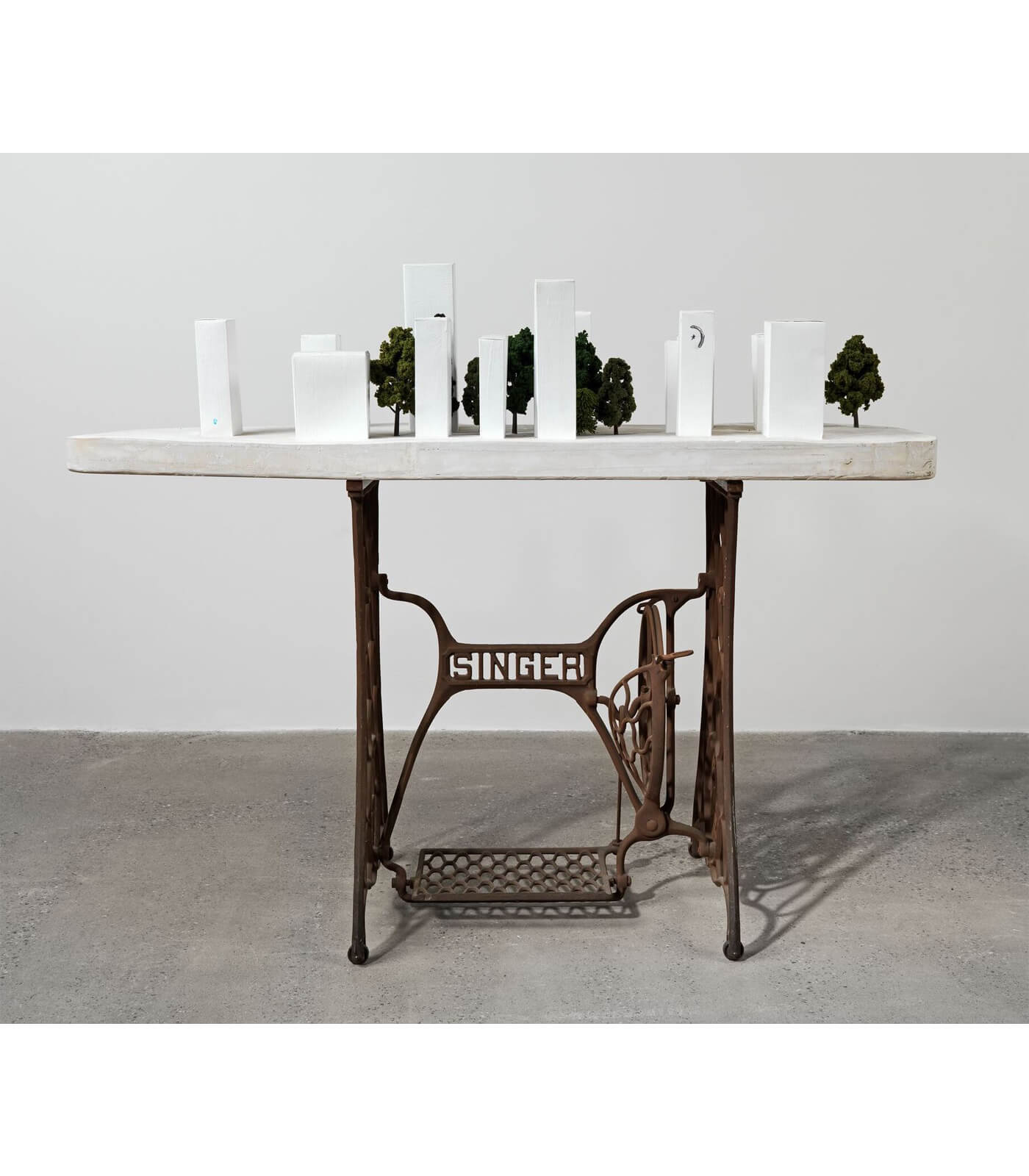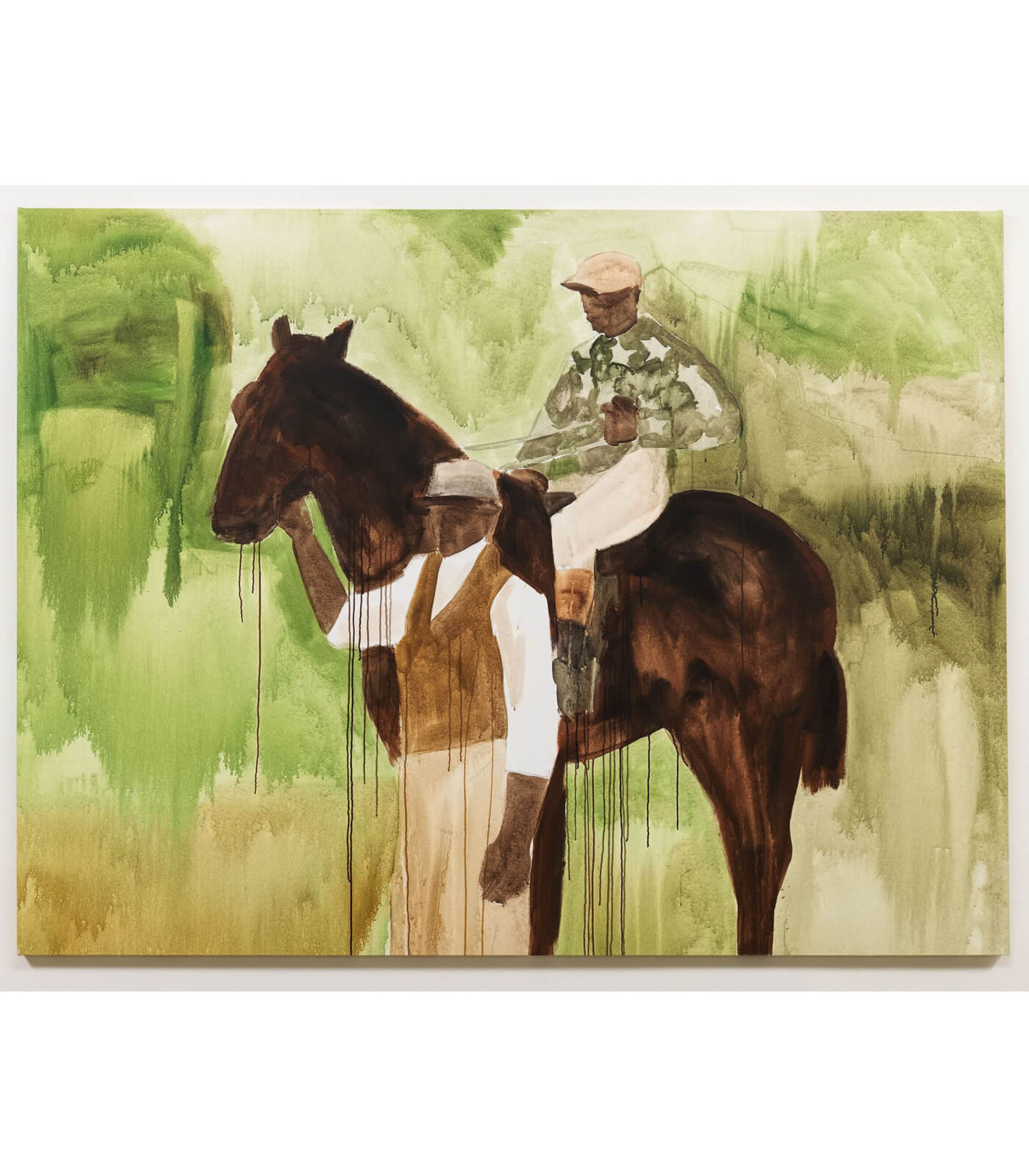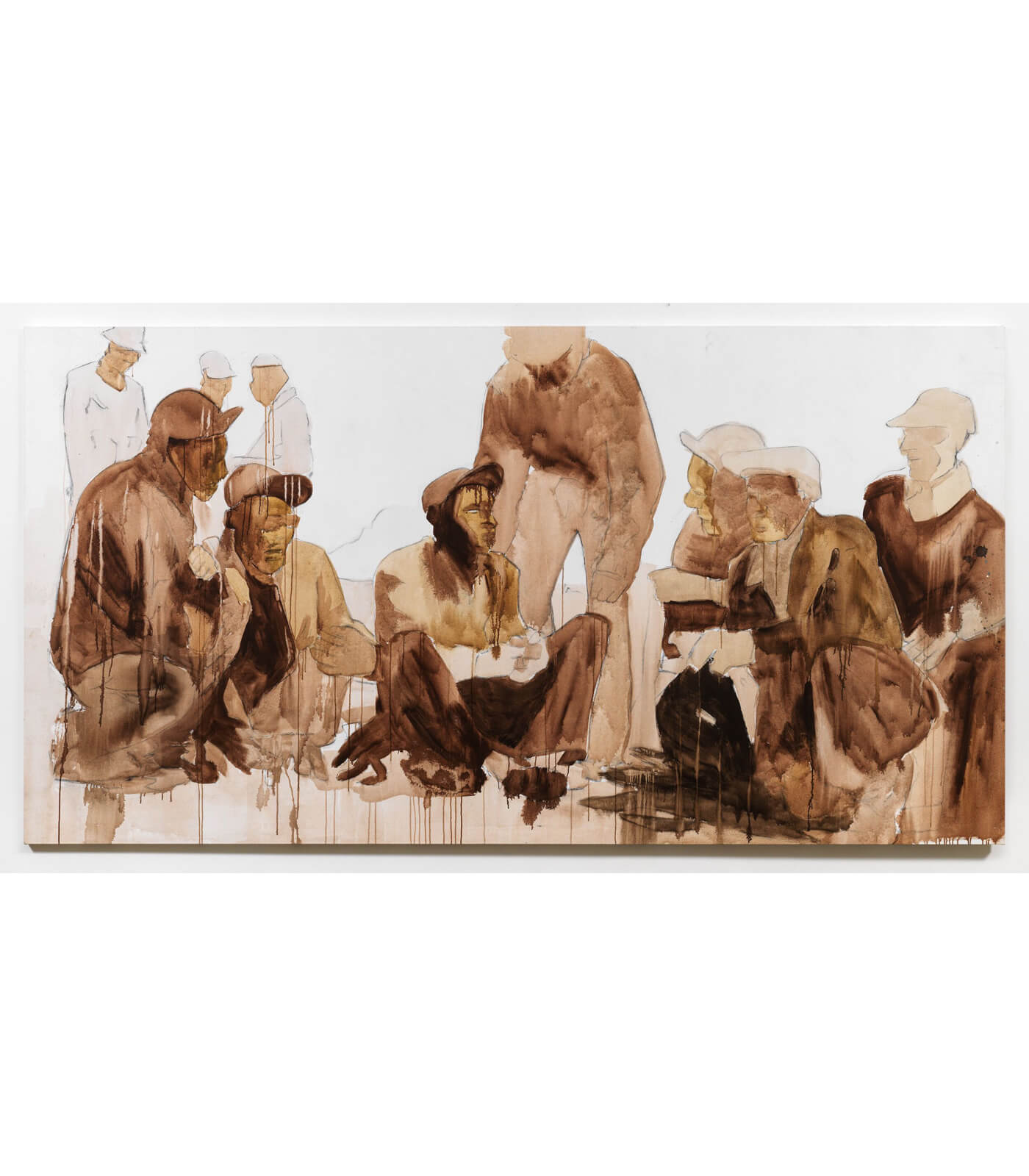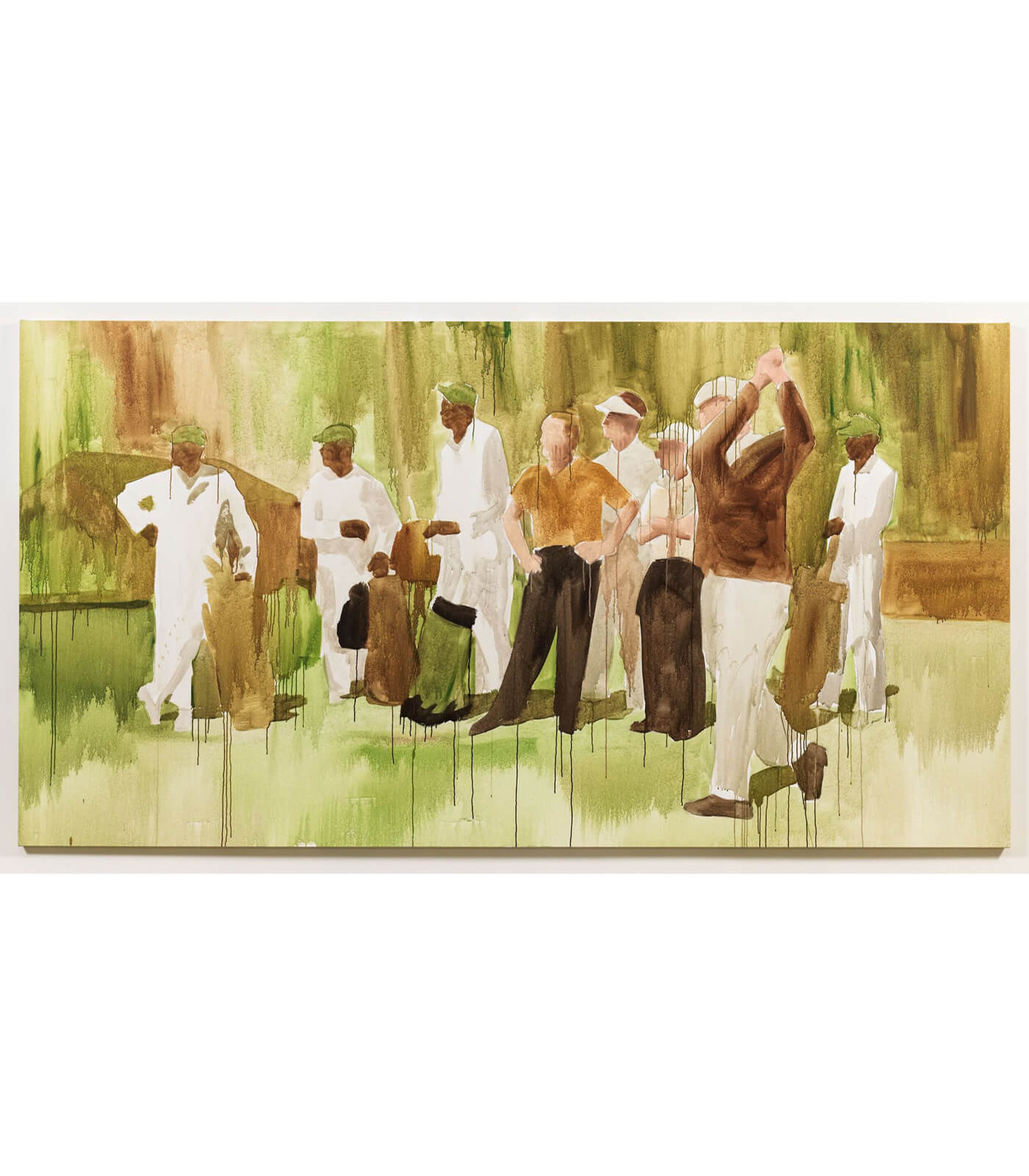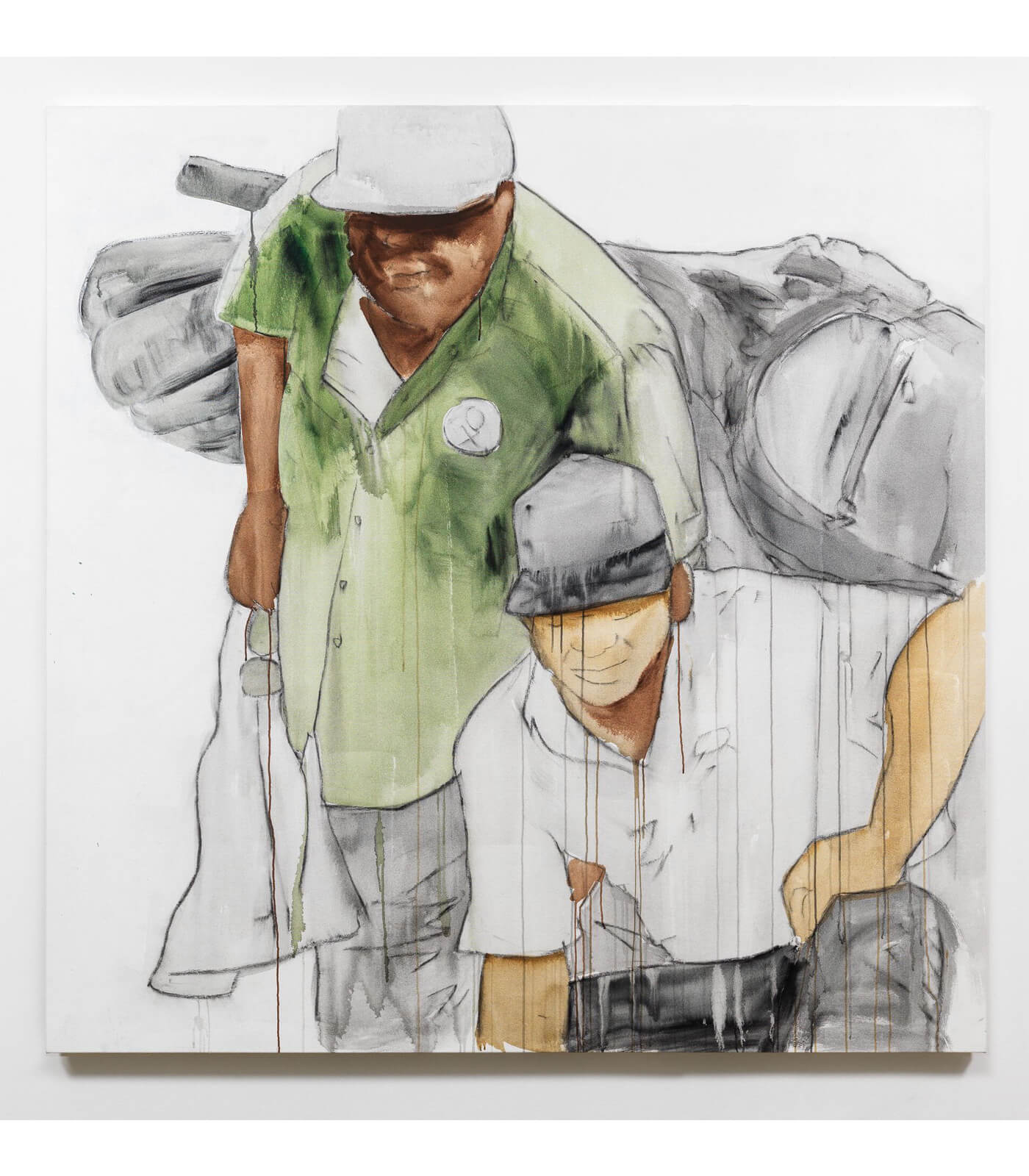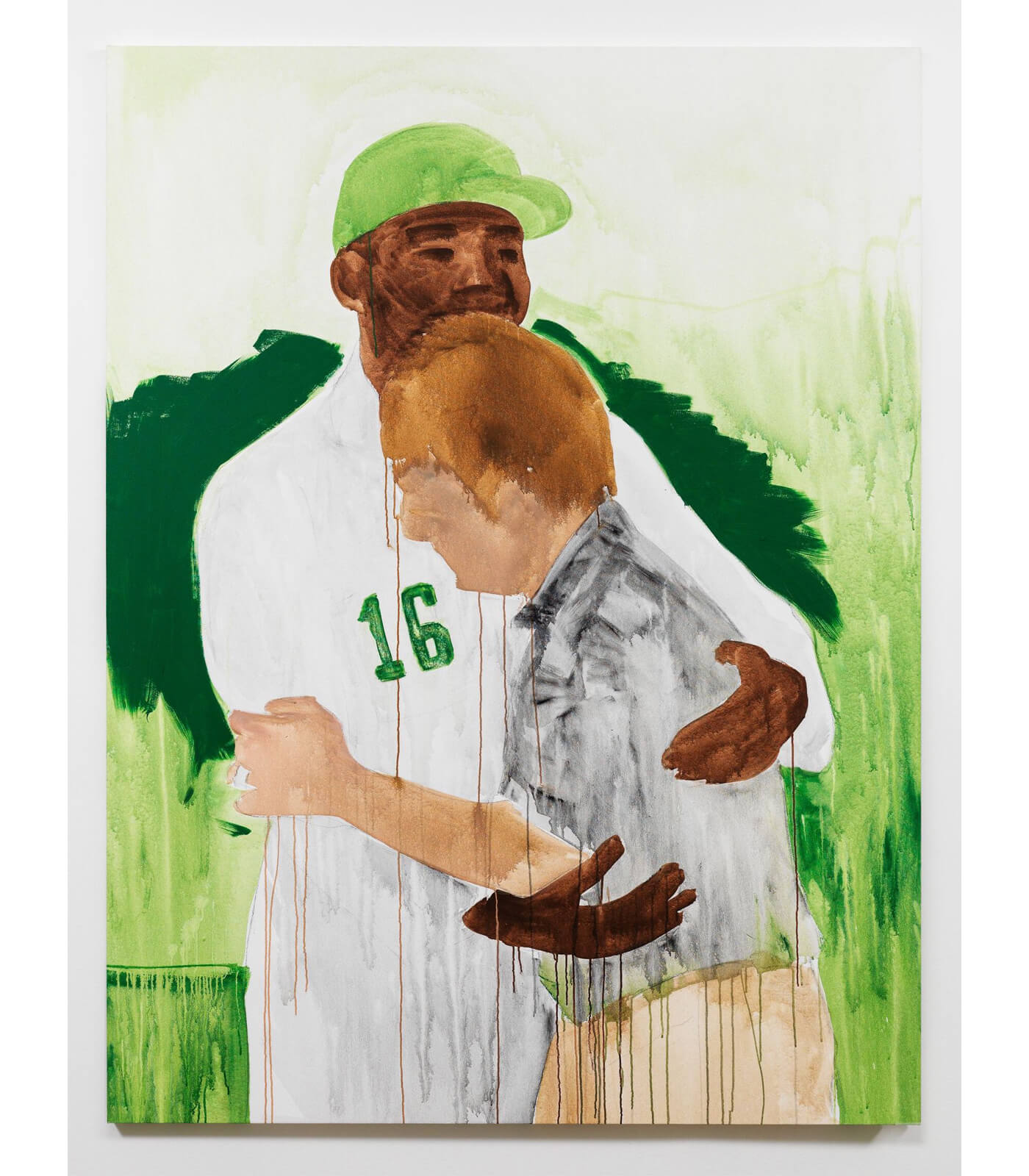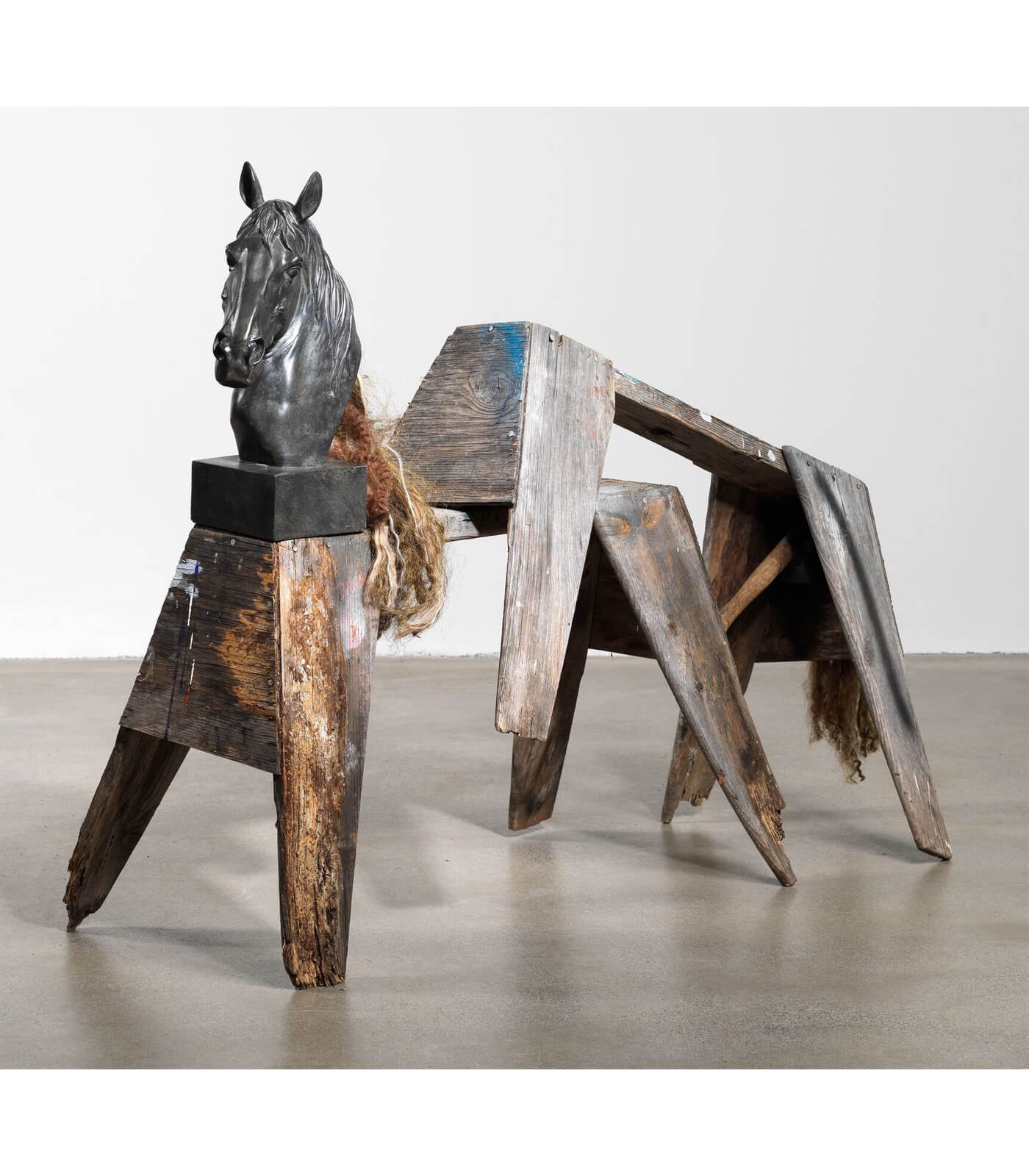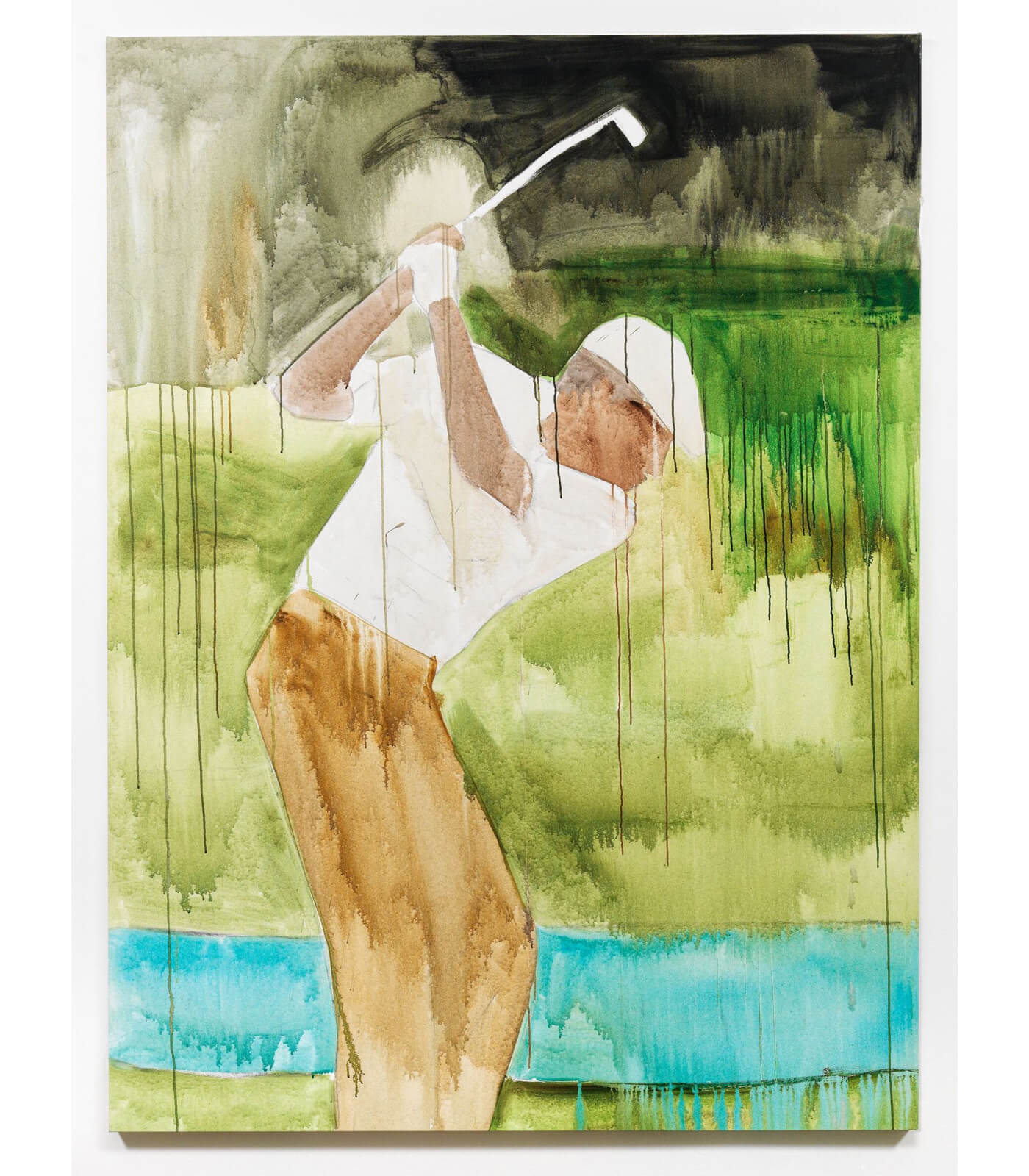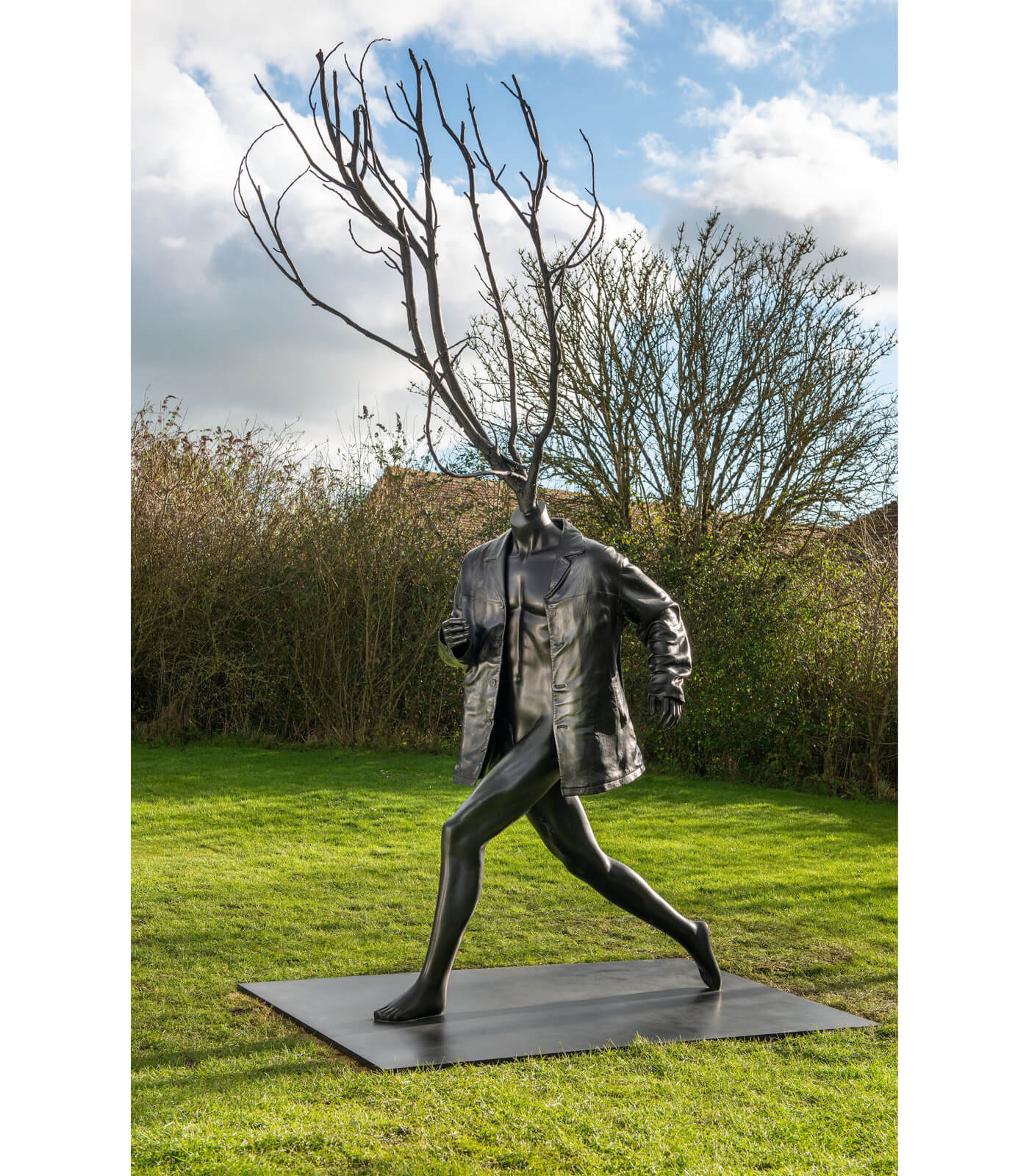
Henry Taylor
Disappeared, but a tiger showed up, later
1 July – 1 August 2021
Southampton
‘Taylor depicts Black history the way many Black people actually experience it: as simultaneous change and stasis, revolution and stagnation, one step for- ward, two steps back.’ –Zadie Smith
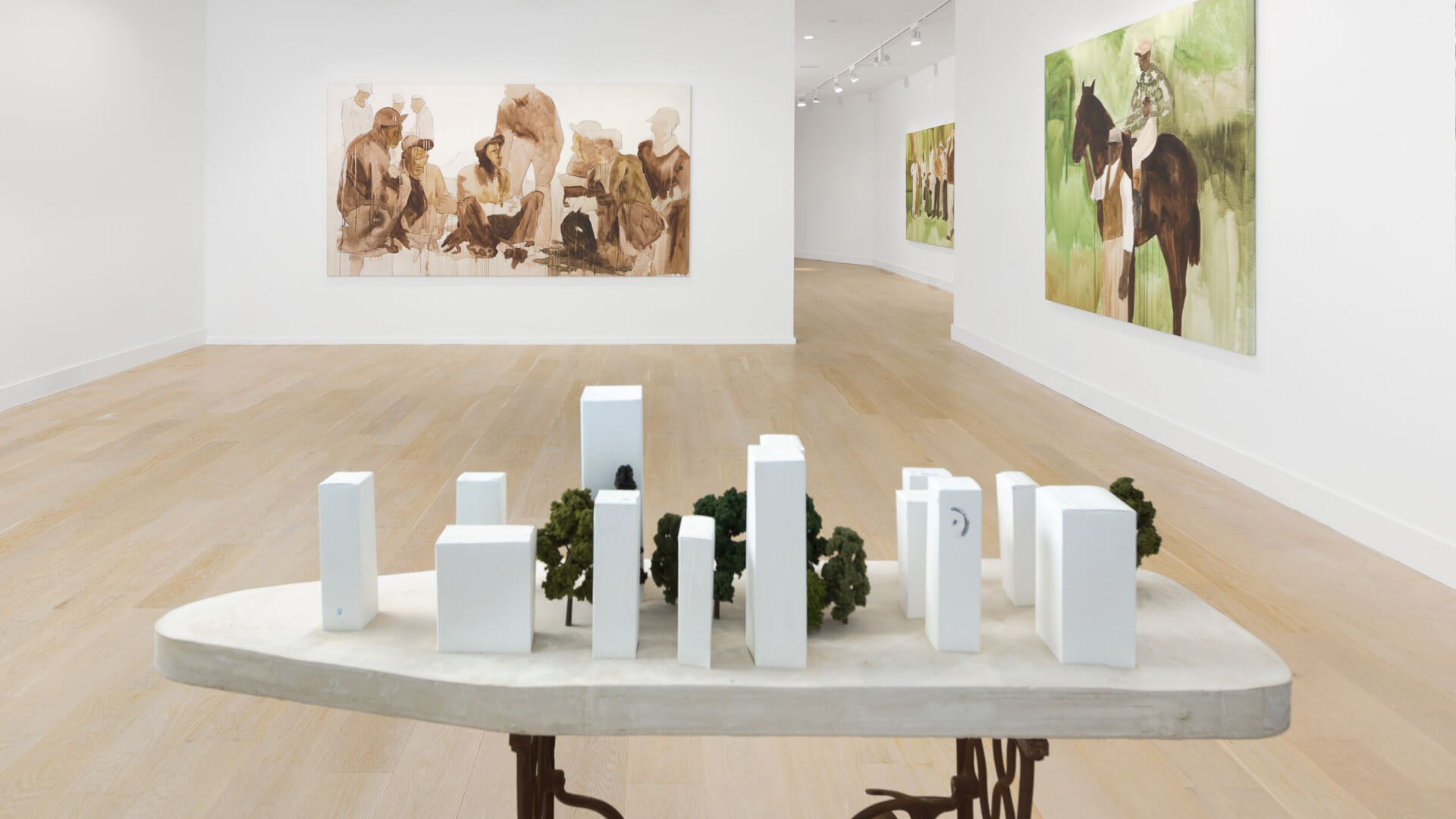
Explore the exhibition
This summer, Los Angeles-based artist Henry Taylor will present a focused selection of recent paintings and sculptures at Hauser & Wirth Southampton. The exhibition includes a group of rarely seen works known as the Jockeys and Caddies, which Taylor began in 2018, based on archival photography of country clubs and horse races dating back to the 1920s. Together, these poignant paintings narrate the history of Black jockeys, caddies, and professional golfers, who navigated these predominantly white and racially exclusionary games.
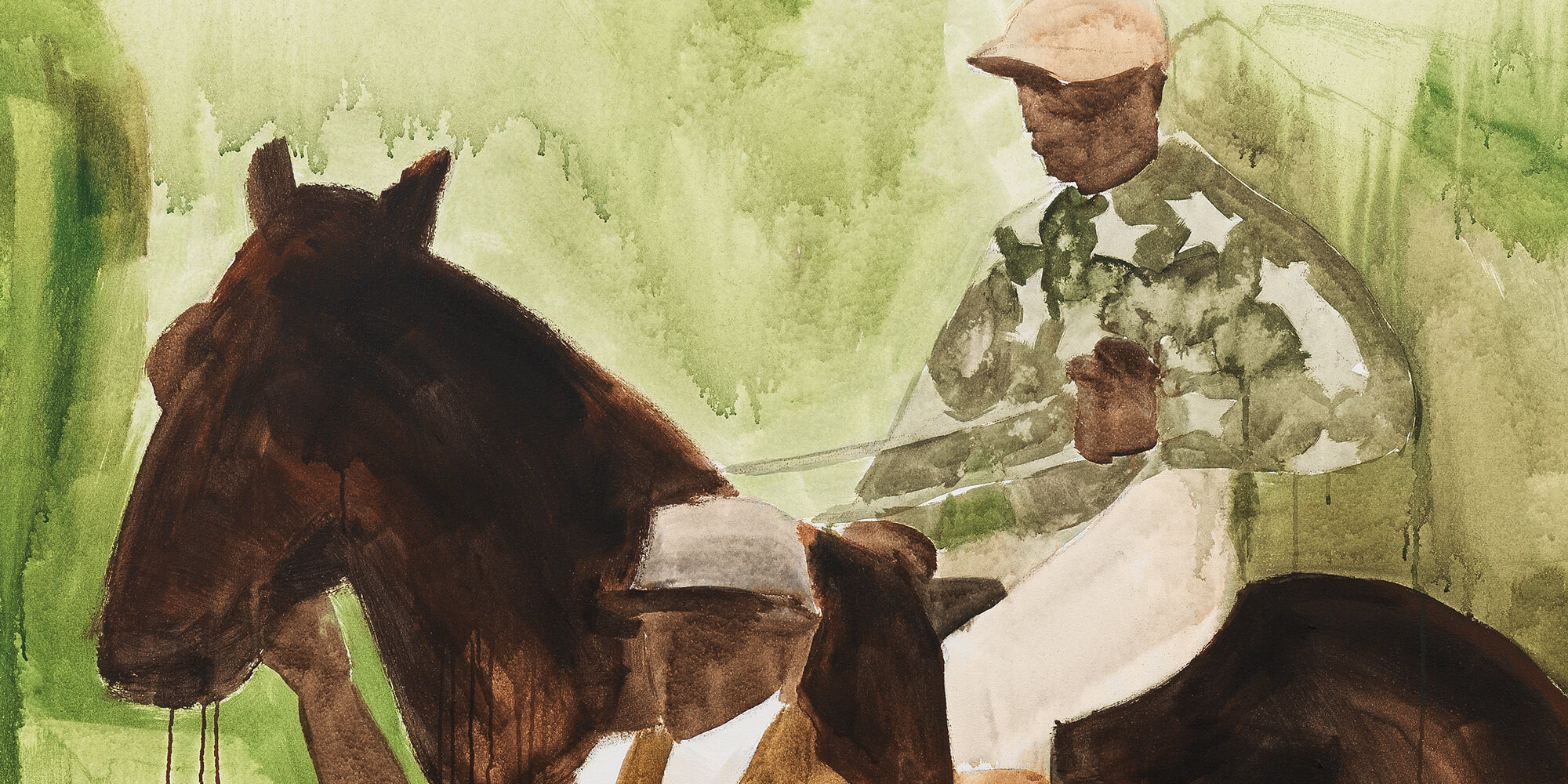
In the first painting on view, Henry Taylor shows racing as it once was: based on a photograph from 1893, Anthony Hamilton, one of the greatest jockeys in the history of racing, sits regally astride thoroughbred ‘Pickpocket’ in his racing silks. Black jockeys like Hamilton, Jimmy Winkfield, and Isaac Murphy once dominated professional racing tracks, however, by the early 1920s, they had all but disappeared from the sport. In the first Kentucky Derby in 1875, 13 out of 15 jockeys were Black. However, the overwhelming success of Black riders in the 1920s led to a backlash in the Jim Crow South, and Black jockeys were soon disqualified from participating in professional racing altogether.
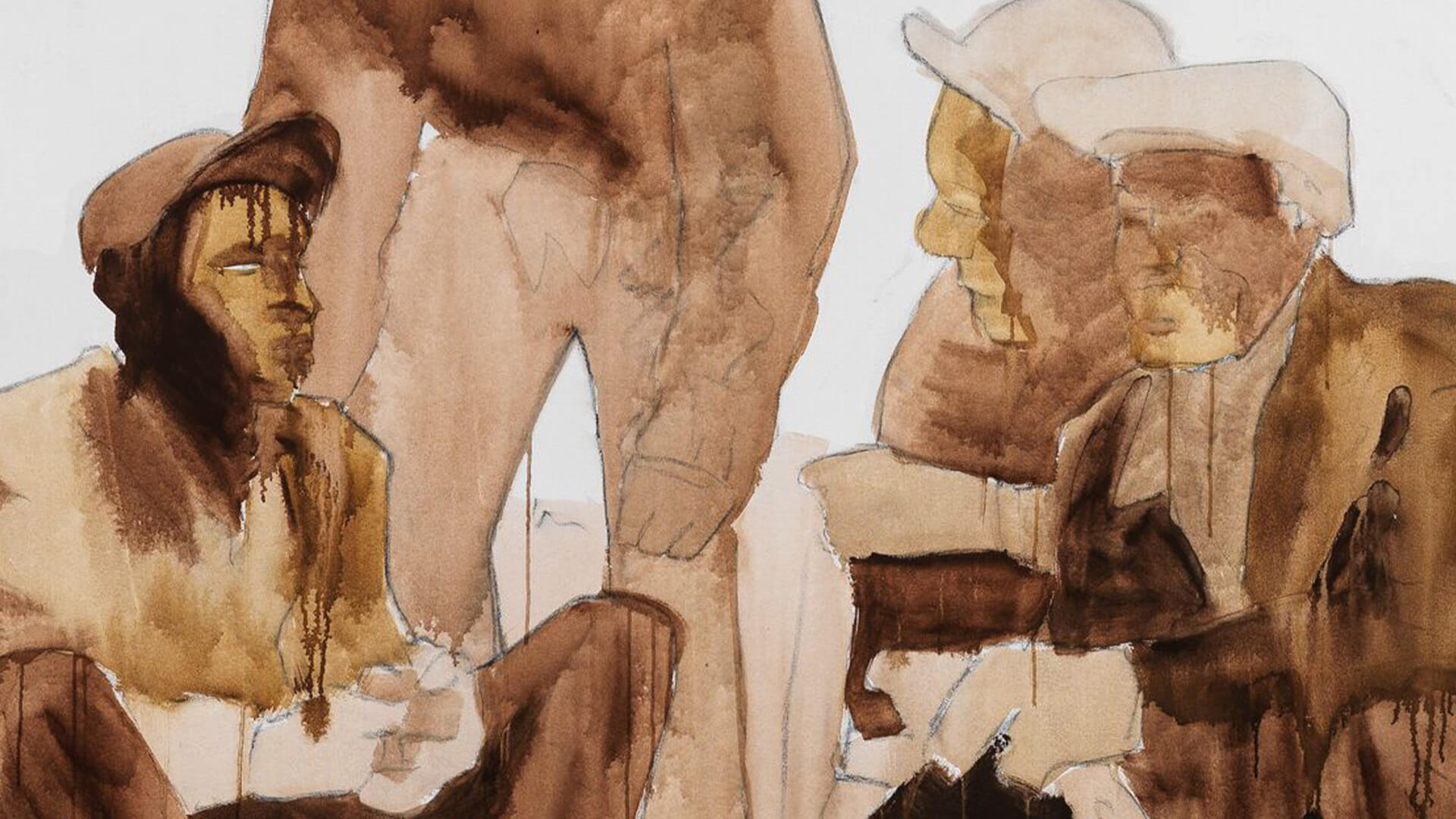
The Caddies series begins with a sepia-toned painting, recreating a photograph taken in 1936 at the Augusta National Golf Club in Georgia, home of the Masters Tournament. Since its inception, the white-only club practiced an unwritten rule requiring its players to employ local caddies, all of whom were Black. At the center of the painting is top golfer Gene Sarazen’s favorite caddie, nicknamed ‘Stovepipe’ because of the hat he frequently wore both on and off the course. His full name has been lost to history.
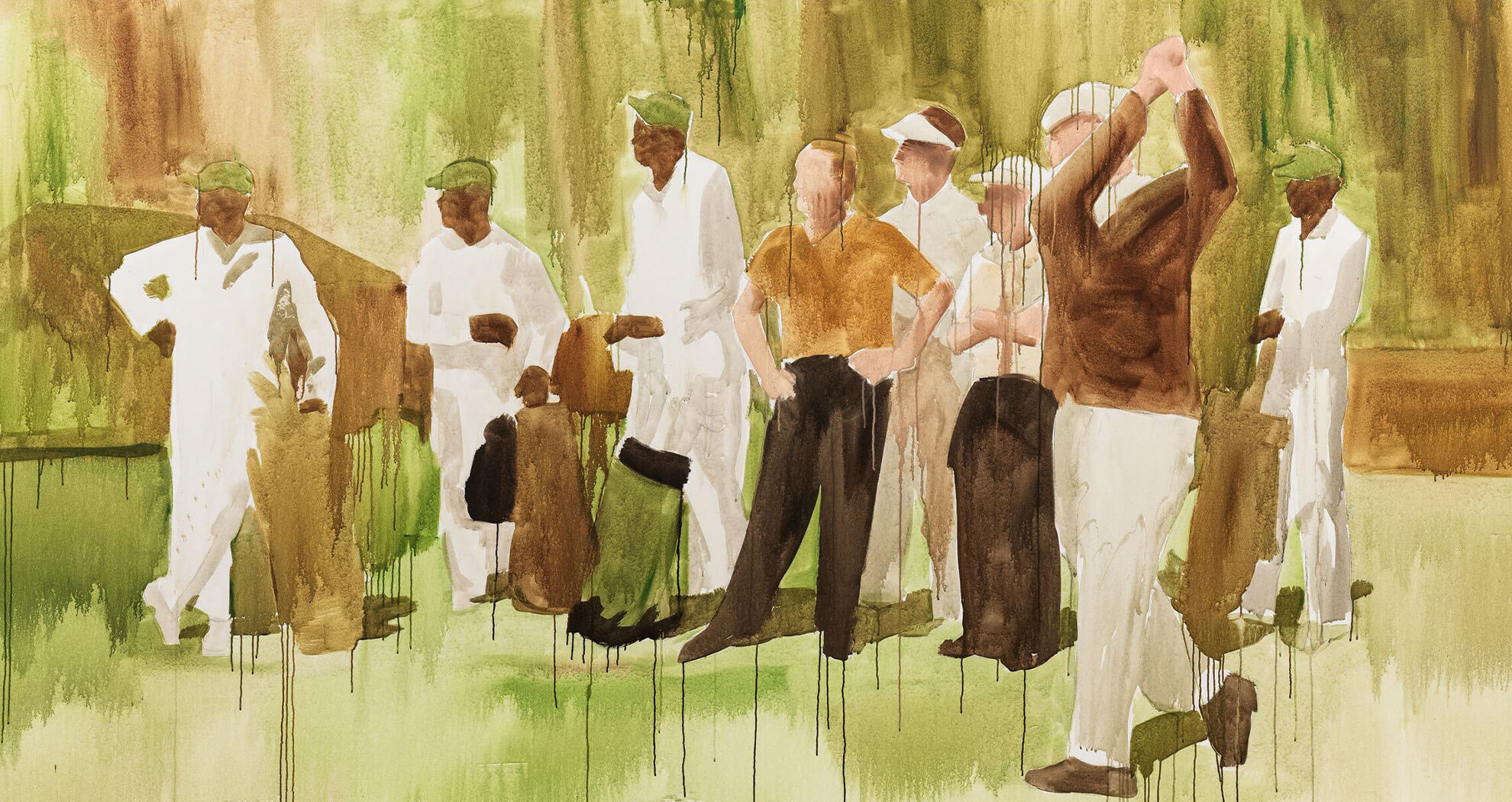
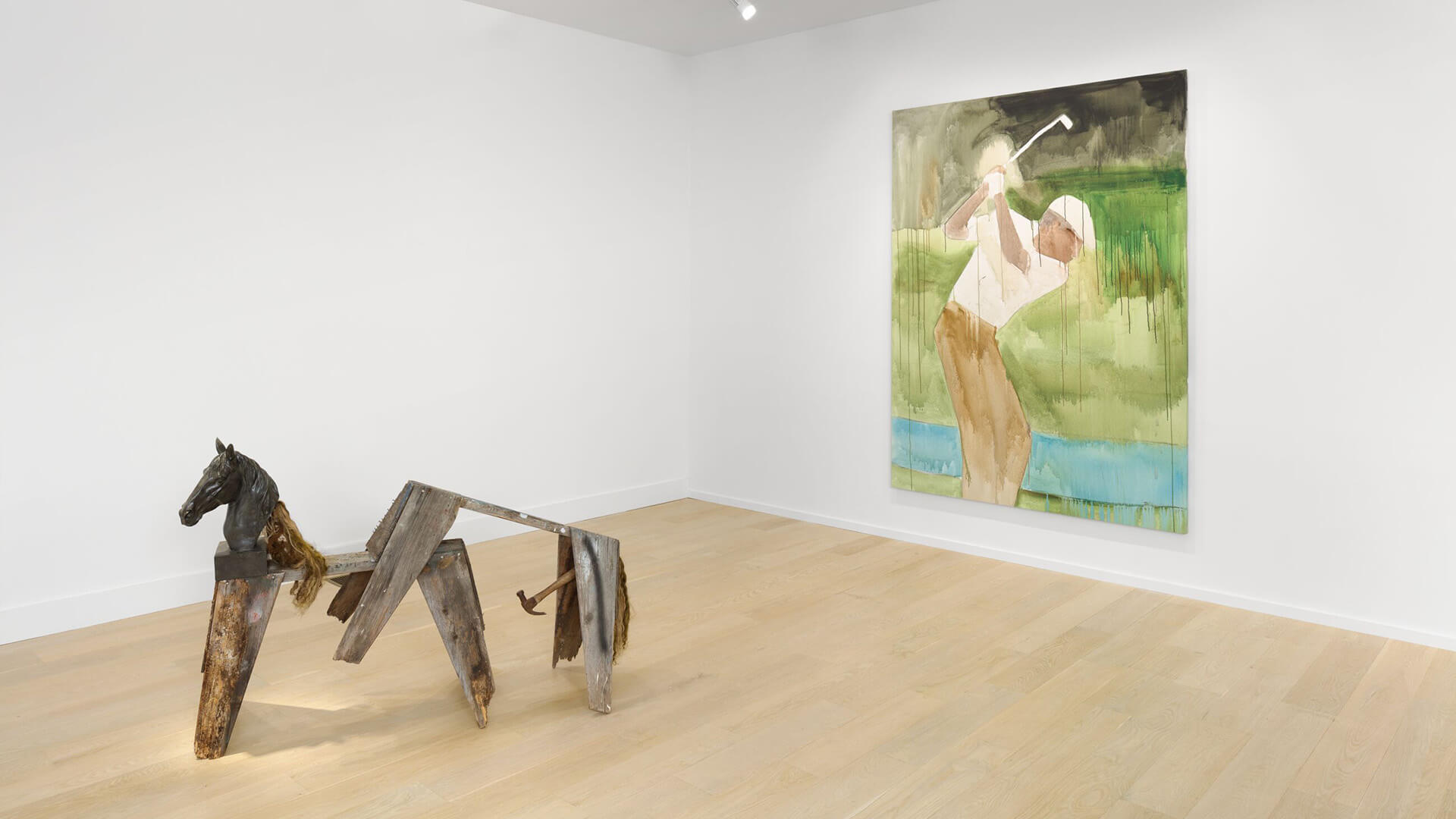
Three paintings from the series go on to celebrate two of the most important caddies who endured this shifting landscape: Herman Mitchell and Carl Jackson. Recreating one of golf’s most famous embraces, Taylor depicts the 1995 image of golfer Ben Crenshaw collapsing into his caddie Jackson’s arms after winning the Masters Tournament. Jackson was one of the longest-serving caddies, beginning his career in 1958, and caddying in every Masters tournament save one between 1961 and 2015. At 65, Jackson was asked once what advice he would give to a young Black man who expressed an interest in golf: ‘It would be my suggestion,’ he said, ‘to try to be the player.’

Additionally, Taylor’s first outdoor bronze sculpture will make its US debut in the exhibition. This work emerged from a conversation between the artist and his older brother Randy in the 1980s. Randy – a founding member of the Black Panther chapter in Ventura County, California – shared the words of an explicit bumper sticker, which stayed with Taylor for nearly two decades until he embodied them into this striding, antlered figure. The work will be installed in the Southampton Arts Center garden behind the gallery.
About the Artist
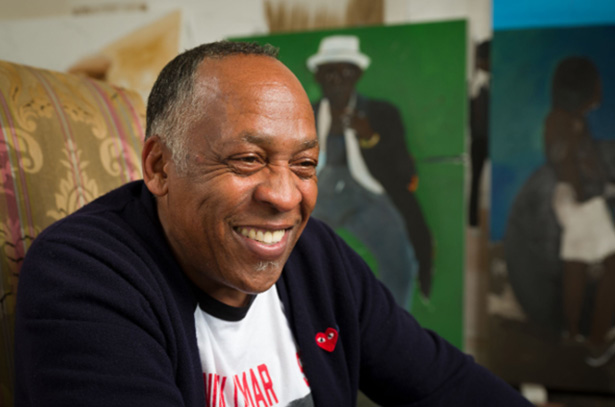
Henry Taylor
Inquire about available works by Henry Taylor
Henry Taylor lives and works in Los Angeles, CA. Taylor’s work is has recently been featured in US group exhibitions ‘i’m yours: Encounters with Art in Our Times’, at the Institute of Contemporary Art Boston, Boston MA and ‘Grief and Grievance: Art and Mourning in America’ at New Museum, New York NY. Additionally, Taylor’s first outdoor bronze sculpture will make its US debut in the exhibition. This work emerged from a conversation between the artist and his older brother Randy in the 1980s. Randy – a founding member of the Black Panther chapter in Ventura County, California – shared the words of an explicit bumper sticker, which stayed with Taylor for nearly two decades until he embodied them into this striding, antlered figure. The work will be installed in the Southampton Arts Center garden behind the gallery.
Current Exhibitions
1 / 12
